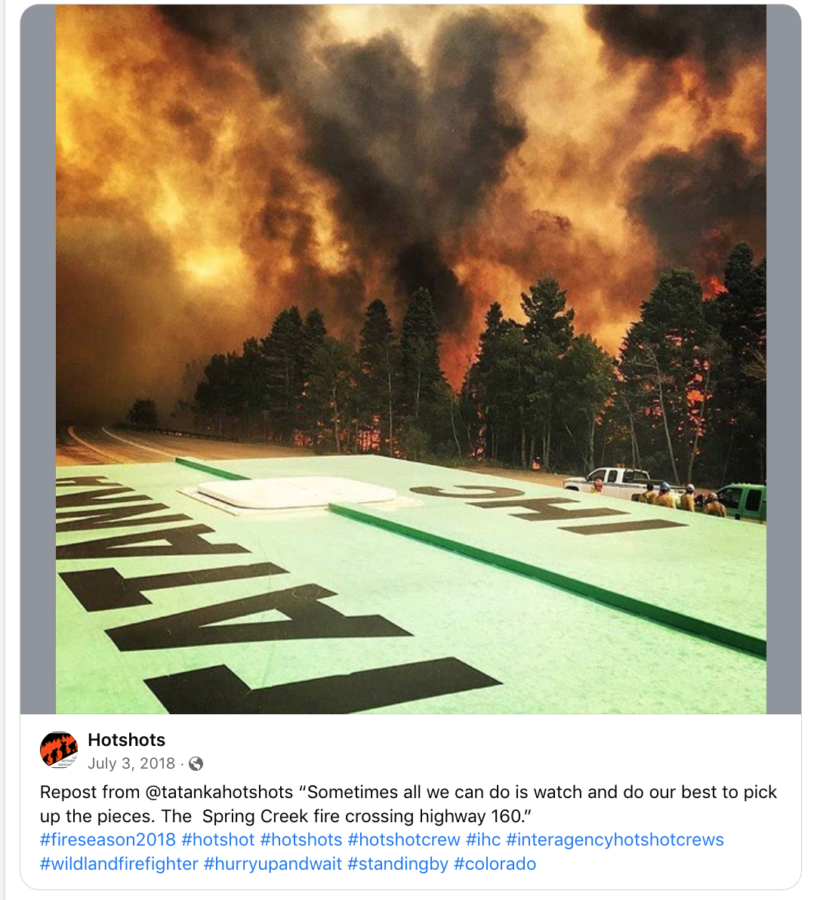A young firefighter who was killed by a falling tree in British Columbia’s southern Interior on Thursday is being remembered by friends, family, and community leaders as a kind and selfless woman committed to protecting the province and those who call it home. The CBC News reported that Devyn Gale, 19, died after being trapped beneath a tree that hit her while she was clearing brush near a fire in a remote area outside Revelstoke, B.C.
The Guardian reported that Canada’s prime minister, Justin Trudeau, has paid tribute to Ms. Gale, and the western province requested an extra 1,000 international firefighters. In a post on Friday Trudeau wrote, “The news from British Columbia – that one of the firefighters bravely battling wildfires has lost her life – is heartbreaking. At this incredibly difficult time, I’m sending my deepest condolences to her family, her friends, and her fellow firefighters.”
Gale’s crew was working on a fire outside the town of Revelstoke, about 310 miles (500km) northeast of Vancouver. Revelstoke Royal Canadian Mounted Police said she was clearing brush in a remote area when she lost contact with her team and was discovered caught under a fallen tree.

Fatalities are relatively rare among Canadian firefighters, and some say it’s in part because Canada’s firefighters do not carry fire shelters as is required in the U.S.
The last such death in British Columbia was in 2015, when firefighter John Phare was killed after he was struck by a falling tree during a fire on the province’s Sunshine Coast. Five years earlier, Tim Whiting and Brian Tilley, two airtanker pilots, died in a plane crash near the town of Lytton.
Davyn Gale’s brother Nolan posted a tribute online early Friday. “Yesterday, while working a fire, my sister Devyn was struck by a tree and killed,” he wrote.

“I’m grateful for everything she’s done for me and others, completely out of kindness with no expectation for reciprocation. She truly didn’t deserve this. Devyn was an amazing sister. She was so kind and thoughtful. She was careful, considerate, hardworking. She was smarter and better at what she did than she gave herself credit for.”
The firefighter was airlifted to a hospital but succumbed to her injuries, a police statement said.
Canada is on track for its worst-ever wildfire season, with record fires also burning in large swaths of eastern Canada, and wildfire emissions have hit record highs.
In Quebec, the Canadian military is being deployed to help with emergency evacuations in the north of the province, the federal emergency preparedness minister said on Friday. In British Columbia, some 2,000 firefighters are battling more than 350 fires, and authorities have requested an extra 1,000 international firefighters to help tackle blazes that have burned 1.2m hectares of forest in the province so far this year, far above the 10-year average of 76,000 hectares.
Gale is the first wildland firefighter to die in B.C. in almost a decade. Fellow firefighters, community leaders and government officials offered condolences from across the country after her passing. “When we think about public service in our province, when we think about commitment to the people of British Columbia, it’s hard to think of a more dramatic example of sacrifice … than putting your life on the line,” B.C. Premier David Eby said, speaking from Vancouver on Friday. “This is a young woman who had her whole life ahead of her. She obviously loved the outdoors and had a strong calling to public service, to stepping up for her friends and neighbors. The whole community is reeling. The province is in mourning for her death — that someone so selfless could die during this kind of work. On behalf of all British Columbians, I want to say thank you to her.”
The Gale family has said that donations in the name of Devyn Gale can be made to the Revelstoke Community Foundation — more info’s available from info@revelstokecommunityfoundation.com
THANKS and a tip of the hardhat to P. and Matthew.




 In 2018 on this date, Bill wrote that the National MAC Group had just moved the national fire level up to PL4 “due to increased significant wildland fire activity from central TX to WA state, the commitment of IMTs, and the potential for new wildland fires across multiple GACCs.”
In 2018 on this date, Bill wrote that the National MAC Group had just moved the national fire level up to PL4 “due to increased significant wildland fire activity from central TX to WA state, the commitment of IMTs, and the potential for new wildland fires across multiple GACCs.”